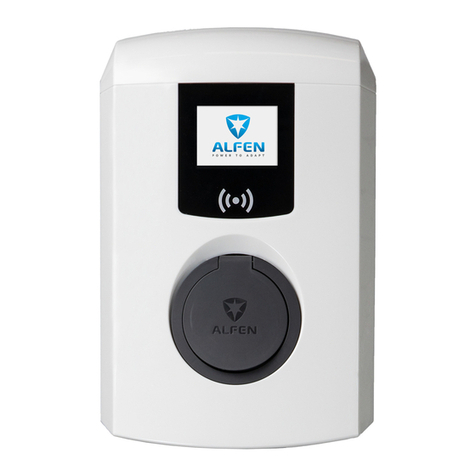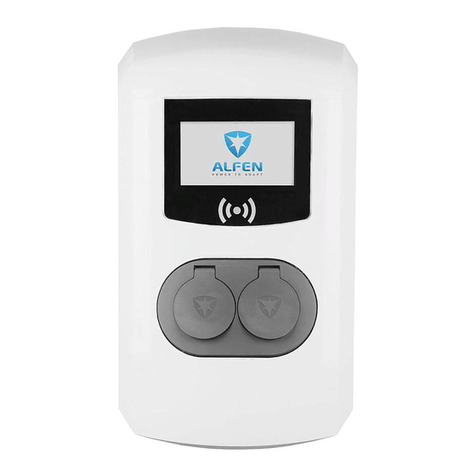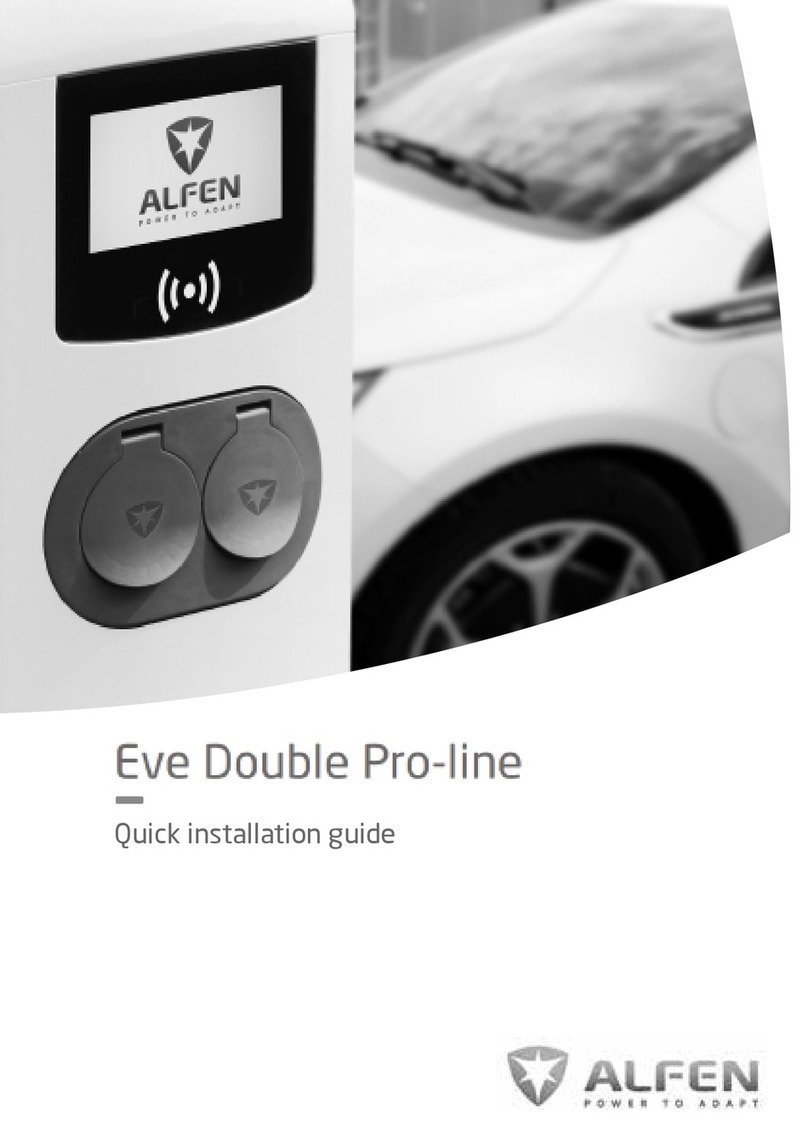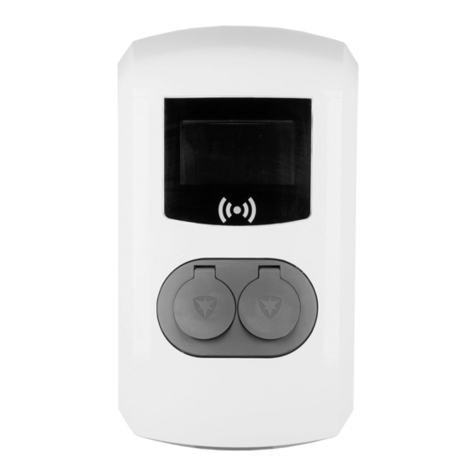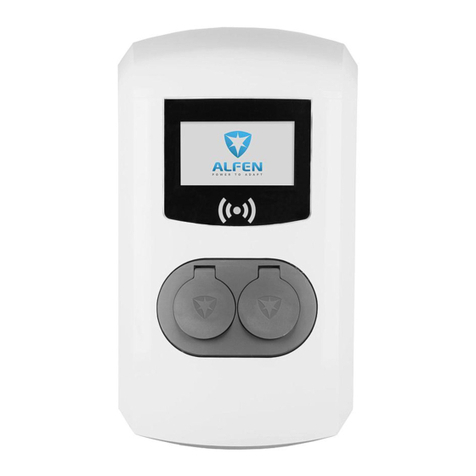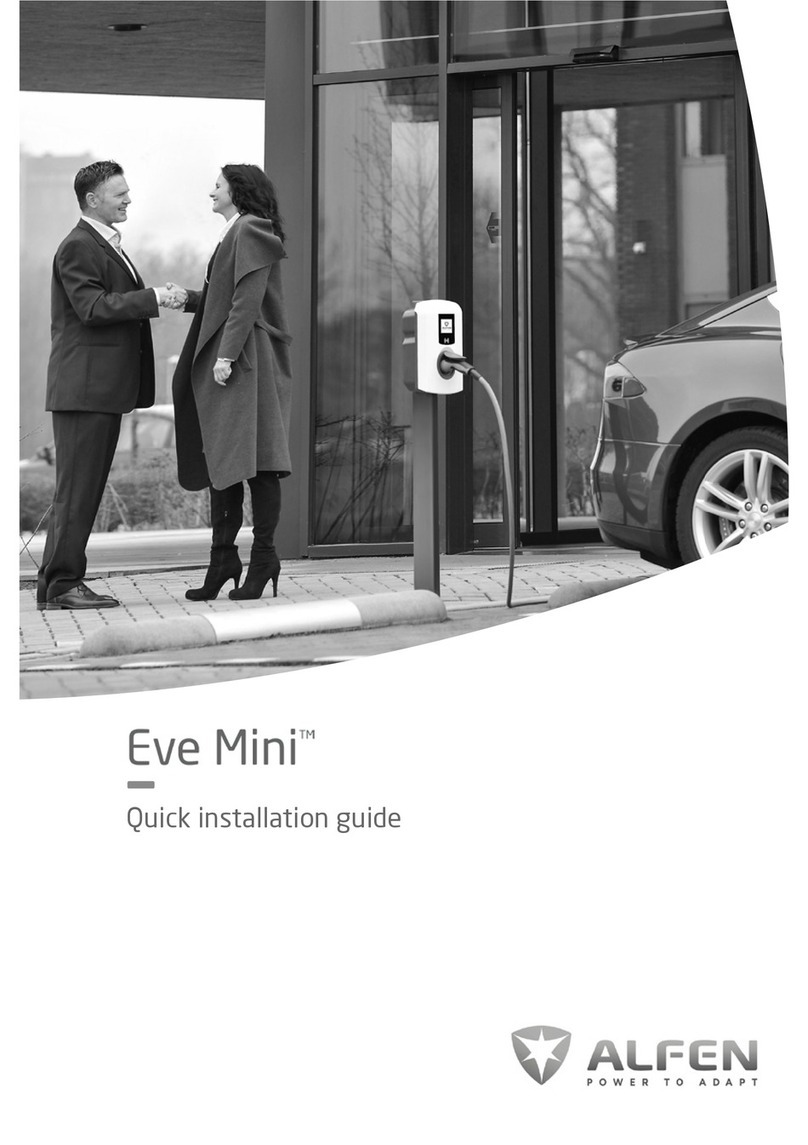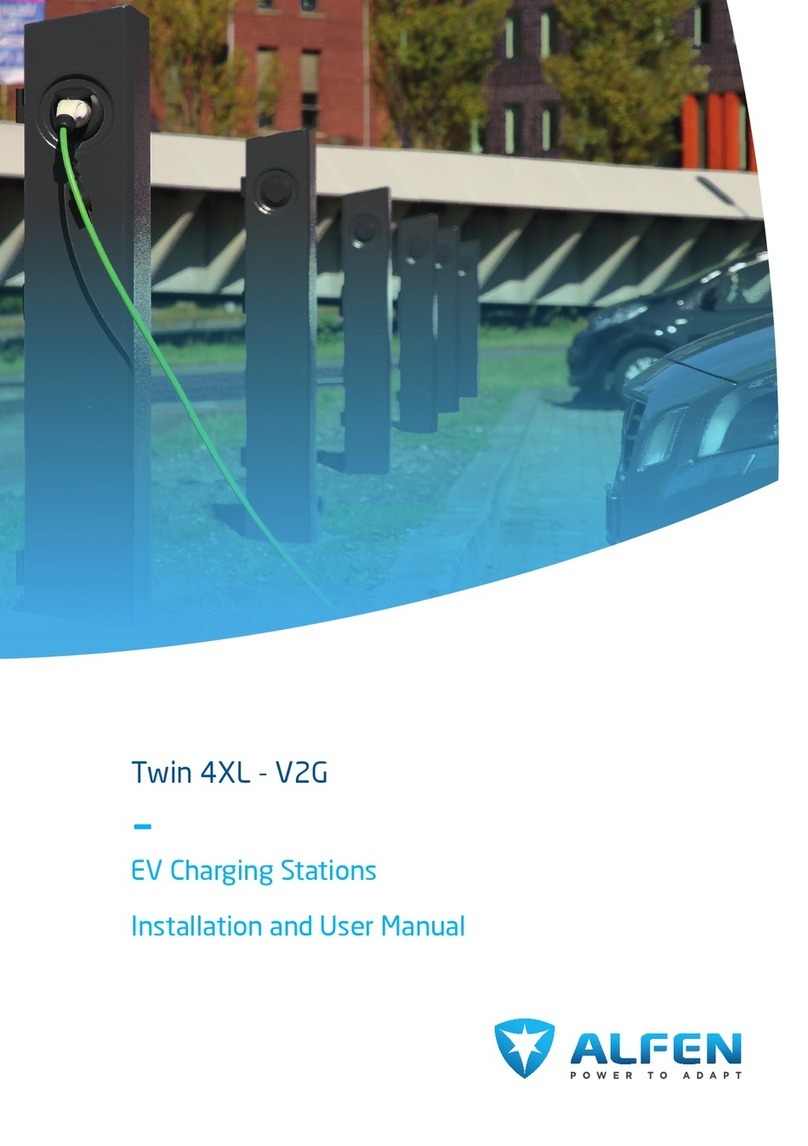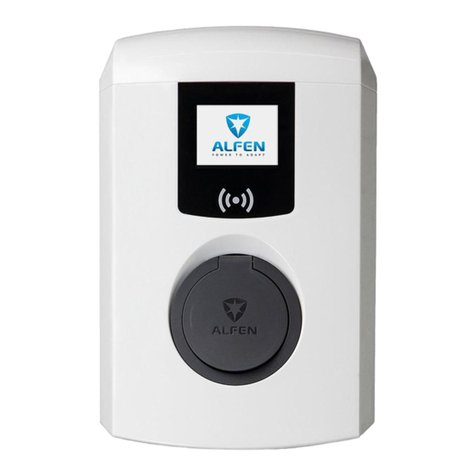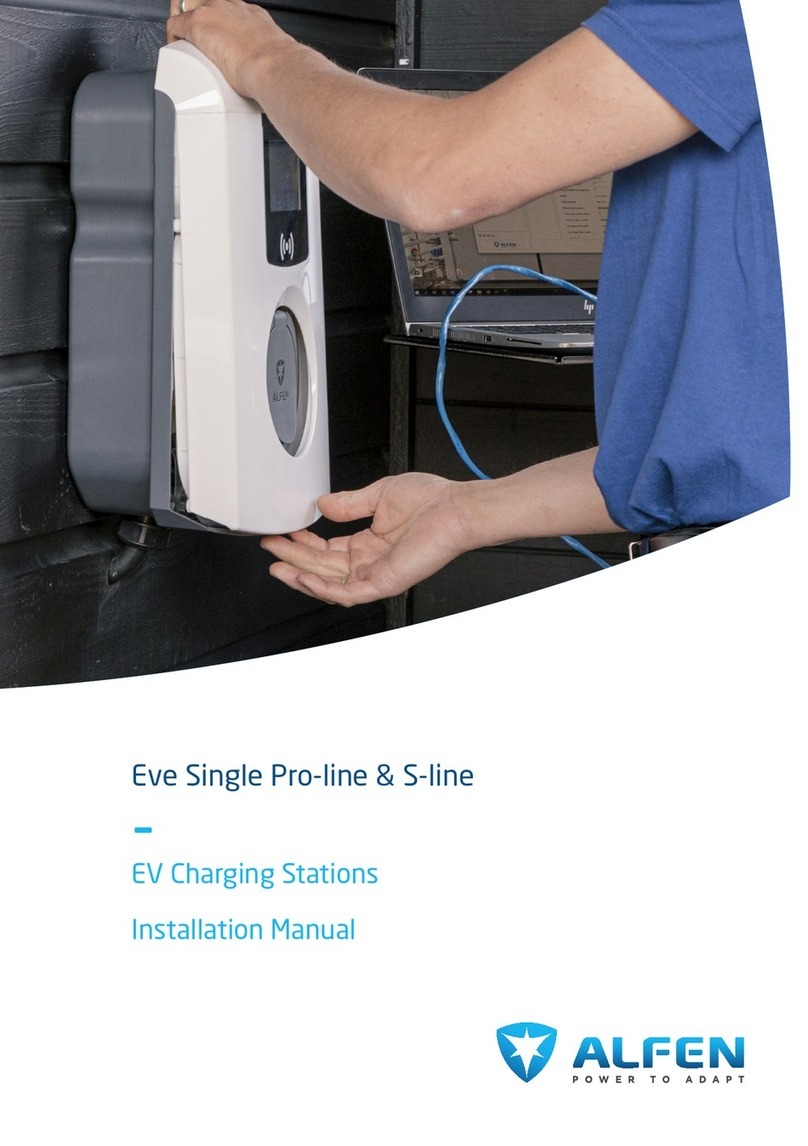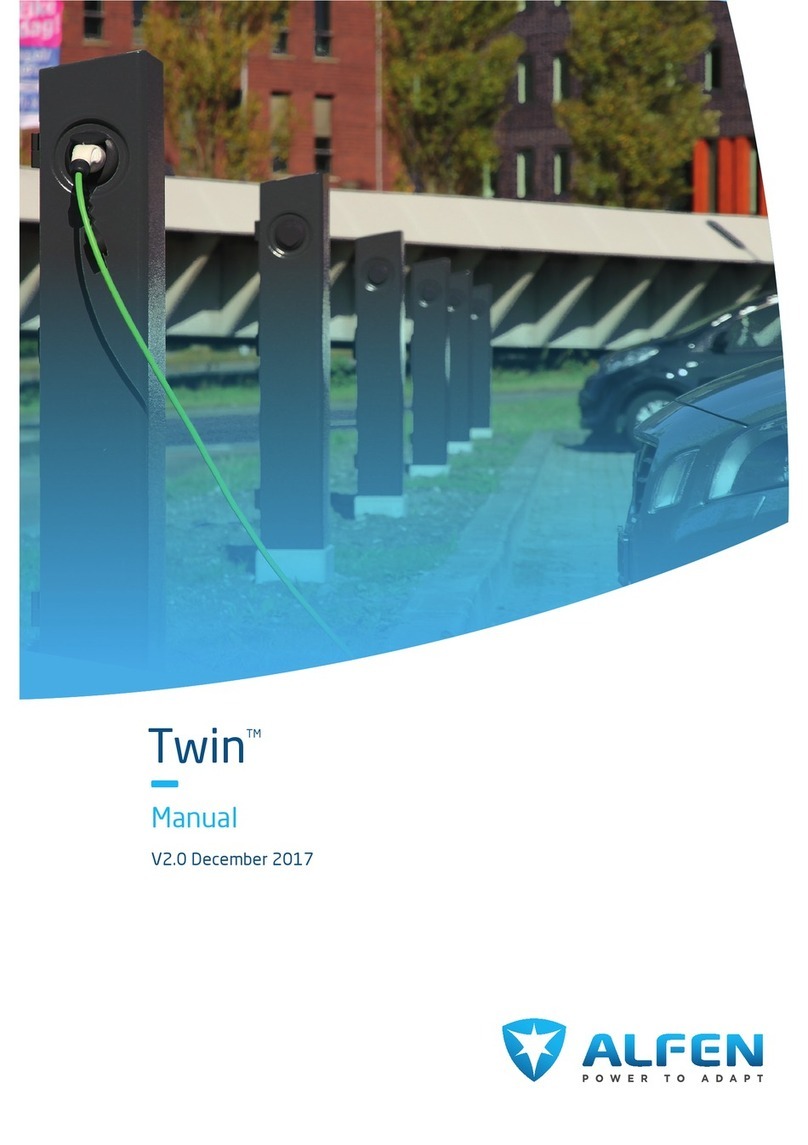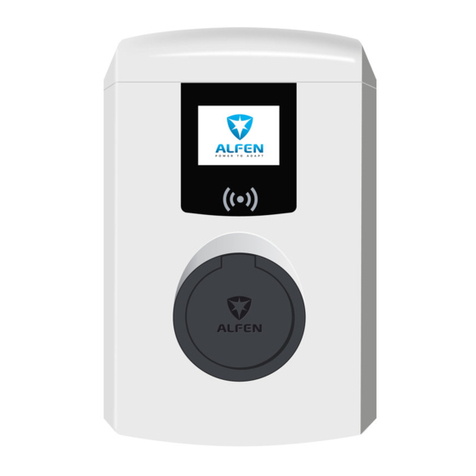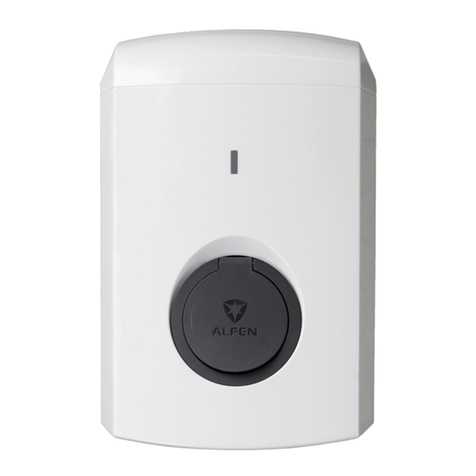
6Eve Single manual |Version 2.0 |February 2019
ENGLISH
DECLARATION OF CONFORMITY
Manufacturer information:
Alfen ICU B.V.
Herugweg 28
1332 AP Almere
The Netherlands
Declares that the charging station of the type Alfen Eve
Single (S-line, Pro-line), to which this declaration applies,
complies with:
1) The provisions of the low voltage directive 2014/35/EU
2) The provisions of the EMC guideline 2014/30/EU
3) The following harmonised standards:
• IEC 61851-1 ed. 3 (2017)- Electric vehicle conductive
charging system - General requirements, implemented
at a national level with:
- AT: ÖVE/EN 61851-1
- BE: NBN EN 61851-1
- DE: DIN-EN 61851-1
- FIN: SFS-EN 61851-1
- FR: NF-EN 61851-1
- NL: NEN-EN-IEC 61851-1
- NO: NEK-EN-61851-1
- UK: BS-EN 61851-1
All mentioned products are labelled with the CE mark.
Almere, The Netherlands, 3 January 2019.
Ir. M. Roeleveld
CEO
1 Safety and usage instructions 7
1.1 Purpose and intended audience 7
1.2 General safety 7
1.3 Disclaimer 7
2 Product 8
2.1 The charging station 8
2.2 User interface 9
2.2.1 Status indications on S-line models 9
2.2.2 Status indications on Pro-line models 9
2.3 Operation 10
2.4 Access control for local authorisation
(RFID, only Pro-line models) 12
2.4.1. Installing the Master Key 12
2.4.2 Adding and removing passes in
the local database 12
2.4.3 Removing the Master Key 13
2.5 Technical specications 13
2.5.1 Eve Single models 13
2.5.2 Specications of Eve Single product lines 13
2.5.3 S-line specications 13
2.5.4 Pro-line specications 14
2.5.5 General product specications 14
2.5.6 Communication and protocols 15
2.5.7 Information safety 15
2.5.8 Available memory 15
2.5.9 User circumstances 15
2.5.10 Casing 16
2.5.11 Installation instructions 17
2.5.12 External protection according to
EV/ZE-Ready 17
2.6 Optional factory settings 18
2.7 Accessories 18
3 Assembly and connecting 19
3.1 Installing and connecting 19
3.2 Assembly and installation requirements 20
3.3 Mechanical installation 20
3.4 Electrical installation 21
4 Commissioning the charging station 23
4.1 Safety instructions before use 23
4.2 Commissioning S-line models 23
4.3 Commissioning Pro-line models 23
4.4 Conguring the charging station with
Service Installer (application) 23
4.4.1 Preparation 23
4.4.2 Using the Service Installer application 24
4.4.3 Changing language settings
(Pro-line models) 24
4.5 Activate functionality with the
Service Installer application 24
5 Connectivity 25
5.1 Management systems 25
5.2 Setting up a connection 25
5.2.1 Wireless connection (only Pro-line) 25
5.2.2 UTP (Ethernet) connection 25
5.3 Register your ICU EZ account 26
5.4 Managing settings 26
5.5 Register your charging station to your
own management system 26
Appendices
Appendix A: Error codes and problem-solving 27
Appendix B: Default selections for optional
factory settings 28
TABLE OF CONTENT


